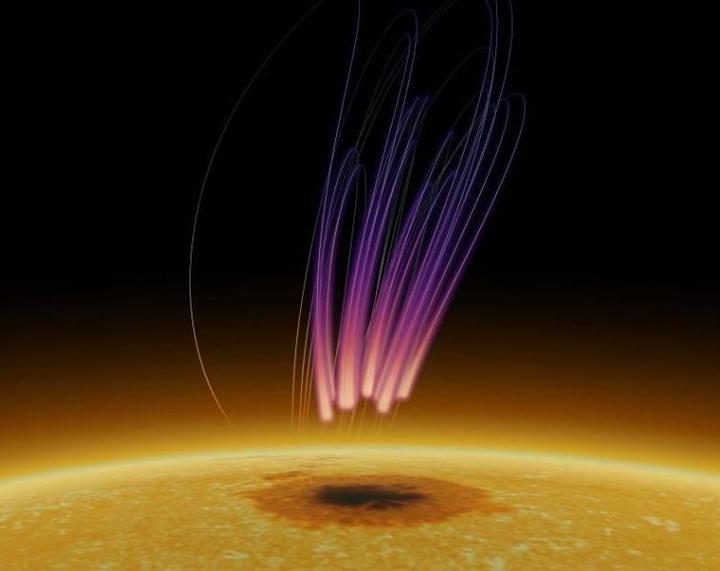
Abstract
Auroral radio emissions in planetary magnetospheres typically feature highly polarized, intense radio bursts, usually attributed to electron cyclotron maser emission from energetic electrons in the planetary polar region that features a converging magnetic field. Similar bursts have been observed in magnetically active low-mass stars and brown dwarfs, often prompting analogous interpretations. Here we report observations of long-lasting solar radio bursts with high brightness temperature, wide bandwidth and high circular polarization fraction akin to these auroral and exo-auroral radio emissions, albeit two to three orders of magnitude weaker than those on certain low-mass stars. Spatially, spectrally and temporally resolved analysis suggests that the source is located above a sunspot where a strong, converging magnetic field is present. The source morphology and frequency dispersion are consistent with electron cyclotron maser emission due to precipitating energetic electrons produced by recurring nearby flares. Our findings offer new insights into the origin of such intense solar radio bursts and may provide an alternative explanation for aurora-like radio emissions on other flare stars with large starspots.